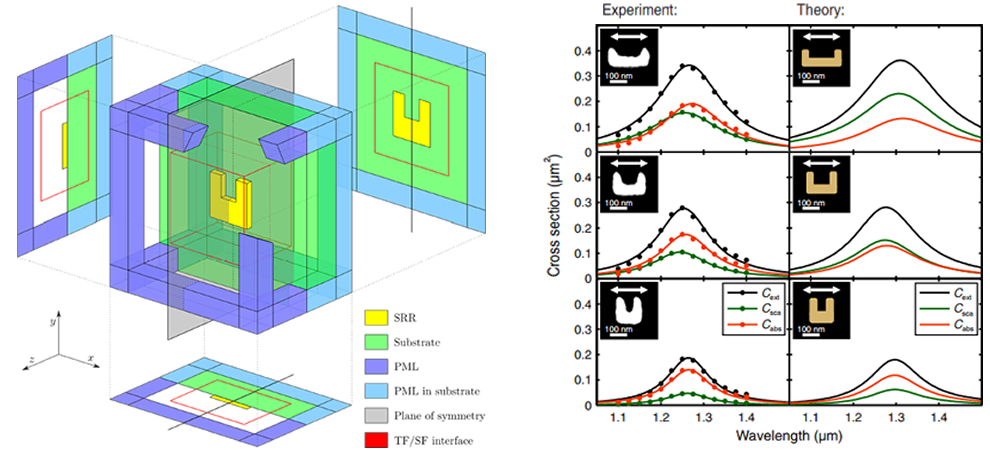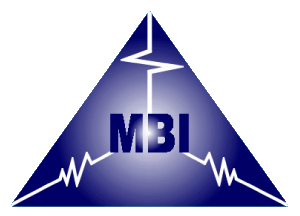Plasmonics
In plasmonic systems, collective excitations of conduction electrons by light lead to the creation of very large values of the electric field that are highly localized near metallic surfaces, including small particles. These surface plasmon polaritons (SPPs) facilitate the realization of efficient sensors and nano-antennas as well as the strong enhancement of nonlinear processes. By the same token, emitters and active material in the vicinity of plasmonic systems feature considerably modified dynamics and – suitably engineered – may even be turned into the active constituents of coherent SPP sources.

Computational setup (left panel) and comparison between experimental and theoretical extinction, scattering and absorption spectra for different nano-antennas (right panel, adapted from Physical Review Letters 109, 233902 (2012)).
In this vast research area, we model and investigate the nonlocal, magneto-optic, and nonlinear properties of plasmonic materials and nanostructures. This also includes extensive comparisons with measured electron-energy-loss and optical spectra. In addition, we analyze the modified radiation dynamics of emitters interacting with nano-antennas and develop a semi-classical theory of the SPASER. Our results on the physics of modified vacuum fluctuations induced by plasmonic systems (such as Casimir forces) is described in the research area Fluctuation-Induced Phenomena.



